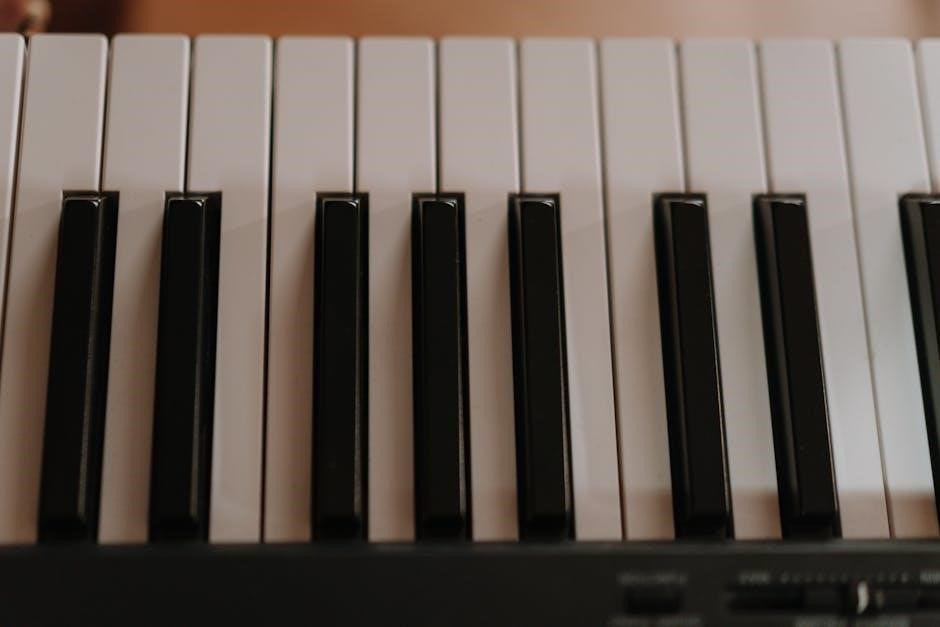Learning chord progressions on piano involves understanding music theory and
- practicing regularly
to improve skills and create beautiful music with harmony and melody, using online resources and pdf guides effectively always.
Understanding Chord Progressions
To understand chord progressions, it’s essential to have a solid grasp of music theory, including knowledge of chords, scales, and harmony. Chord progressions are a series of chords played in a specific order, and they can be used to create a wide range of emotions and moods in music. By studying chord progressions, pianists can improve their ability to compose, improvise, and accompany other musicians. The internet offers a wealth of resources, including pdf guides and online tutorials, to help pianists learn and understand chord progressions. With practice and dedication, pianists can master chord progressions and take their playing to the next level. Understanding chord progressions is a key part of becoming a well-rounded pianist, and it can open up new possibilities for creativity and expression. By learning chord progressions, pianists can expand their musical knowledge and skills, and develop their own unique style and sound. Chord progressions are a fundamental element of music, and understanding them is crucial for any pianist.
Importance of Chord Progressions in Music
Chord progressions play a vital role in music, as they provide the harmonic foundation for a song or piece. A well-crafted chord progression can evoke emotions, create tension and resolution, and add depth and complexity to a melody. Chord progressions are used in various genres of music, from classical to jazz and pop, and are a key element in creating a memorable and engaging musical experience. By using chord progressions, musicians can create a sense of structure and cohesion, while also leaving room for improvisation and creativity. The importance of chord progressions in music cannot be overstated, as they have the power to transform a simple melody into a rich and captivating work of art. With the help of online resources and pdf guides, musicians can learn to create and use chord progressions effectively, taking their music to new heights and exploring new possibilities for expression and innovation. Effective use of chord progressions can make music more enjoyable and meaningful.

Types of Chord Progressions
Chord progressions come in various forms, including diatonic and non-diatonic, using
- different chord types
and creating unique sounds always effectively online.
Minor Chord Progressions
Minor chord progressions are a crucial aspect of music theory, often used to create somber or melancholic moods in various genres, including jazz and classical music, with the use of minor triads and seventh chords.
The progression typically involves a series of minor chords played in a specific order, such as the minor pentatonic scale, to produce a unique sound and emotional effect on the listener.
Minor chord progressions can be used in different contexts, including piano accompaniments, solos, and ensemble performances, requiring a deep understanding of music theory and harmony.
By practicing and experimenting with minor chord progressions, pianists can develop their skills and create complex, emotionally resonant music, using online resources and pdf guides to improve their technique and knowledge of chord progressions.
With the help of technology, pianists can access a wide range of minor chord progressions and practice materials, including audio examples and video tutorials, to enhance their musical abilities and expression.
Minor chord progressions are an essential tool for pianists, composers, and musicians, offering a rich and diverse palette of sounds and emotions to explore and express in their music.
The use of minor chord progressions can add depth, complexity, and feeling to musical compositions, making them a vital element of music creation and performance.
Major Chord Progressions

Major chord progressions are a fundamental element of music theory, commonly used in various genres to create happy, uplifting, and joyful moods, with the use of major triads and seventh chords.
The progression typically involves a series of major chords played in a specific order, such as the major scale, to produce a bright and cheerful sound, and can be used in different contexts, including piano accompaniments and solos.
Major chord progressions can be found in many popular songs and are often used as a starting point for improvisation and composition, requiring a good understanding of music theory and harmony.
With the help of online resources and pdf guides, pianists can access a wide range of major chord progressions and practice materials, including audio examples and video tutorials, to improve their technique and knowledge of chord progressions.
Major chord progressions are an essential tool for pianists, composers, and musicians, offering a rich and diverse palette of sounds and emotions to explore and express in their music, and can add depth and complexity to musical compositions.
The use of major chord progressions can enhance the overall sound and feel of a piece of music, making them a vital element of music creation and performance, and can be used to create a sense of resolution and finality.

Voicings and Chord Rearrangements
Using piano chord voicings and rearrangements creates unique sounds and textures, enhancing music with harmony and melody, using online resources and pdf guides effectively always with music theory knowledge.
Understanding Voicings
Understanding voicings is a crucial aspect of playing chord progressions on the piano, as it allows for a more nuanced and expressive sound. Voicings refer to the way in which the notes of a chord are arranged and played, and can greatly impact the overall texture and feel of a piece of music. By using different voicings, pianists can add depth and complexity to their playing, and create a more interesting and engaging sound. This can be achieved through the use of various techniques, such as rootless voicings, shell voicings, and drop 2 voicings, which can be learned through the study of music theory and the practice of playing chord progressions. With the help of online resources and pdf guides, pianists can gain a deeper understanding of voicings and how to apply them in their playing, leading to a more sophisticated and expressive sound. Using voicings effectively can enhance the emotional impact of music and create a more compelling listening experience.
Applying Voicings to Chord Progressions
Applying voicings to chord progressions involves using the various voicing techniques to add depth and complexity to the music. This can be done by using different voicings for each chord in the progression, or by using a consistent voicing throughout. The use of voicings can greatly impact the overall sound and feel of the music, and can be used to create a sense of tension and release. By experimenting with different voicings, pianists can find the right sound for their music and create a unique and expressive style. The application of voicings to chord progressions requires a strong understanding of music theory and the ability to hear and play the different voicings. With practice and patience, pianists can master the art of applying voicings to chord progressions and take their playing to the next level. Using online resources and pdf guides can provide valuable insights and examples of how to apply voicings effectively.

Resources for Learning Chord Progressions
Online resources and pdf guides provide valuable tools for learning chord progressions on piano effectively always with harmony and melody.
400 Piano Chord Progressions
The 400 Piano Chord Progressions is a comprehensive guide that contains over 400 progressions for piano, including 40 audio examples to help learners understand and practice the chords effectively. This resource is ideal for pianists of all levels, from beginners to advanced players, as it provides a wide range of progressions to suit different styles and genres of music. The progressions are well-organized and easy to follow, making it simple for learners to find and practice the chords they need. Additionally, the audio examples provide a valuable tool for learners to hear how the chords should sound, helping to improve their overall playing skills. With this guide, pianists can improve their ability to play and create music with confidence and expression, using the chord progressions to enhance their musicality and artistry. The 400 Piano Chord Progressions is a valuable resource for anyone looking to improve their piano playing skills and expand their musical knowledge.
Chord Progression Handbook
The Chord Progression Handbook is a valuable resource for musicians, providing a comprehensive guide to chord progressions and their application in music. This handbook lays out a progressive set of common progressions within Western folk and popular music traditions, arranged into four charts for easy reference. Each progression includes a clickable link to a song that uses the progression, allowing learners to hear and understand how the chords are used in context. The handbook covers both diatonic and non-diatonic chord progressions, making it a useful tool for musicians of all levels and styles. By studying the Chord Progression Handbook, musicians can improve their ability to hear and play chord progressions, enhancing their skills in composition, accompaniment, improvisation, arrangement, and teaching. The handbook is a useful companion to other resources, such as the 400 Piano Chord Progressions, and can help musicians to develop a deeper understanding of music theory and its practical application. This handbook is a must-have for any serious musician.